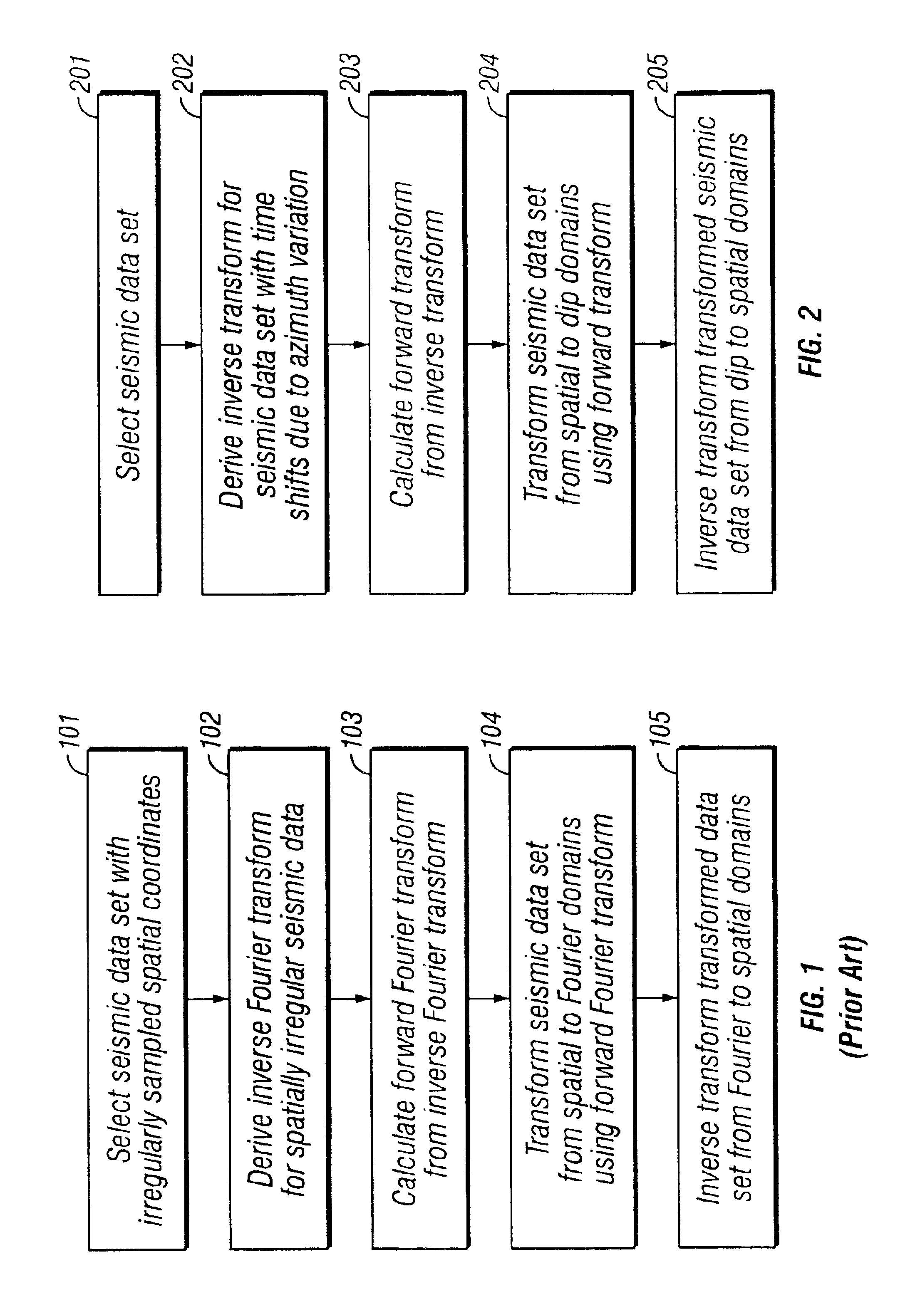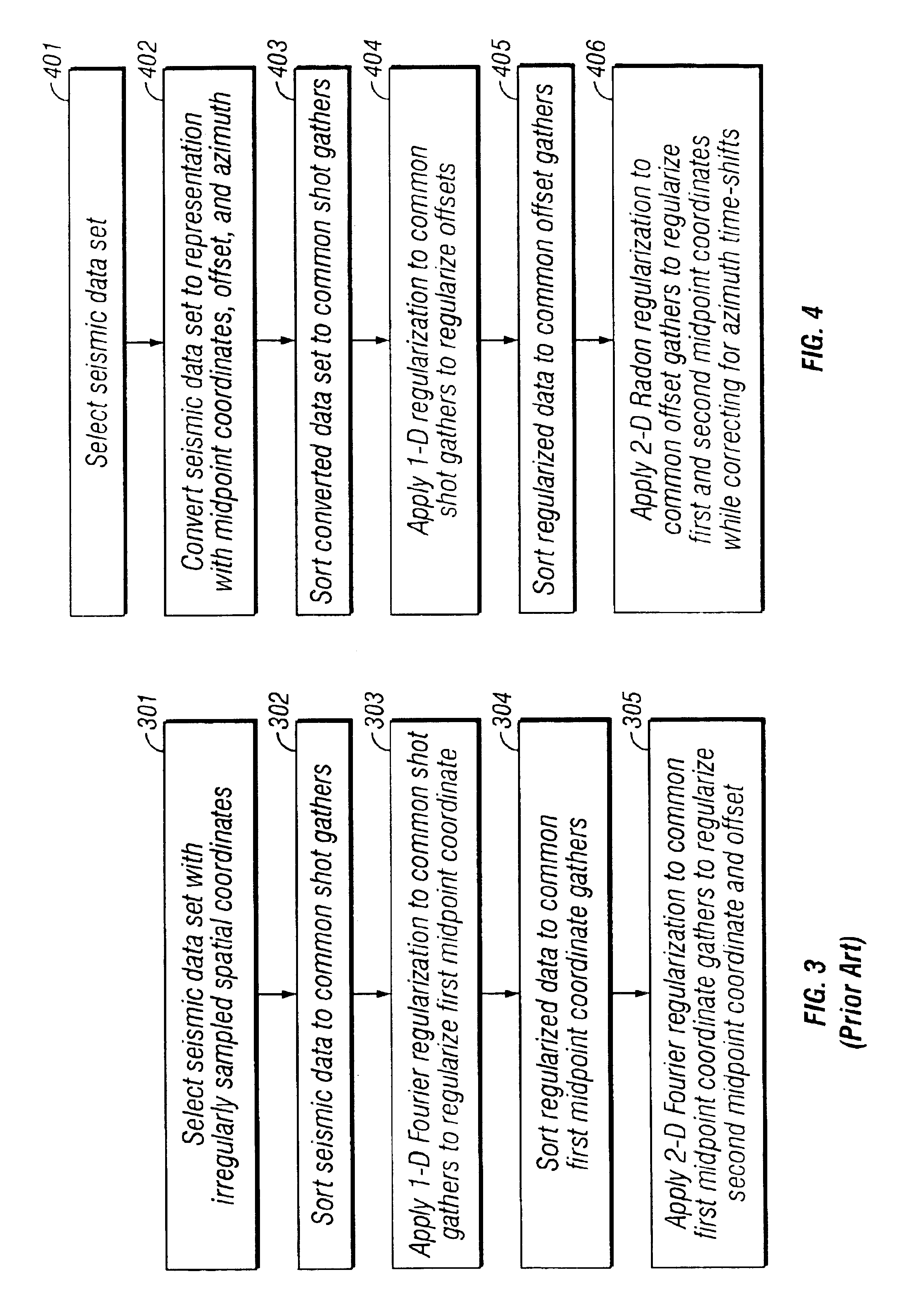Method of correcting for time shifts in seismic data resulting from azimuthal variation
a technology of azimuth variation and seismic data, applied in seismology, instruments, geological measurements, etc., can solve the problems of time-lapse seismic and imaging, fourier regularization, and inability to compensate for the variation of azimuth variables, and neglecting these time shifts will have limited consequences
- Summary
- Abstract
- Description
- Claims
- Application Information
AI Technical Summary
Problems solved by technology
Method used
Image
Examples
examples
[0102]For examples, the method of the invention will be applied to a model with a single dipping layer in a homogeneous subsurface. The data represent a time-lapse survey. The parameters describing the acquisition geometry are flip-flop shooting with a 25 meter shot interval (flip to flop), 16 streamers, 75 meter streamer separation, and no feathering. Two surveys have been modeled, representing a time-lapse measurement. The base and monitor survey are shot in the same direction, but the sail-lines are not repeated. The cross-line distance between the two surveys is 100 meters.
[0103]FIG. 5 shows a plan view of the acquisition geometry of the base survey 501 and the monitor survey 502. The black box 503 shows the part that is used for the regularization. A common offset section is used.
[0104]FIG. 6 shows a plot of the azimuth variations versus the cross-line coordinate in the base and monitor surveys for the acquisition geometry shown in FIG. 5. FIG. 6 shows the azimuth. variation fo...
PUM
 Login to View More
Login to View More Abstract
Description
Claims
Application Information
 Login to View More
Login to View More - R&D
- Intellectual Property
- Life Sciences
- Materials
- Tech Scout
- Unparalleled Data Quality
- Higher Quality Content
- 60% Fewer Hallucinations
Browse by: Latest US Patents, China's latest patents, Technical Efficacy Thesaurus, Application Domain, Technology Topic, Popular Technical Reports.
© 2025 PatSnap. All rights reserved.Legal|Privacy policy|Modern Slavery Act Transparency Statement|Sitemap|About US| Contact US: help@patsnap.com



